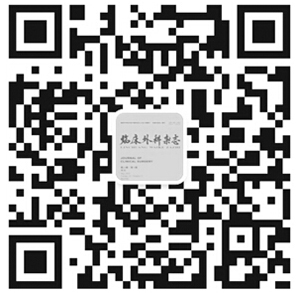|
|
Expression and clinical significance of serum miR-144-3p and miR-126-3p in patients with intracerebral hemorrhage
YAN Chaojun, SUN Guangwei, HU Changlong, QIU Tao, WANG Meng, FAN Yongzhong
JOURNAL OF CLINICAL SURGERY. 2025, 33 (10):
1064-1068.
DOI: 10.3969/j.issn.1005-6483.20241509
Objective To investigate the expression and clinical significance of serum microRNA-144-3p (miR-144-3p) and microRNA-126-3p (miR-126-3p) in patients with intracerebral hemorrhage (ICH).Methods From February 2022 to April 2023,120 ICH patients who underwent treatment at our hospital were recruited as the ICH group.They were separated into a good prognosis group and a poor prognosis group based on the modified Rankin Scale (mRS) score After 6 months treatment Additionally,110 healthy individuals who underwent physical examination at our hospital were included as the control group.Clinical data of patients were collected and analyzed.Enzyme linked immunosorbent assay (ELISA) was applied to detect serum levels of tumor necrosis factor-α (TNF-α) and vascular endothelial growth factor (VEGF) indicators.Real-time fluorescence quantitative polymerase chain reaction (qRT-PCR) was applied to detect the expression levels of serum miR-144-3p and miR-126-3p.Pearson method was applied to analyze the correlation between serum miR-144-3p,miR-126-3p,TNF-α,and VEGF levels in ICH patients.Multivariate Logistic regression was applied to analyze the factors affecting the prognosis of ICH patients.ROC curve was applied to analyze the predictive value of serum miR-144-3p and miR-126-3p for the prognosis of ICH patients.Results In the control group, the serum miR-144-3p was 1.02±0.02, the TNF-α was (19.15±6.79) pg/ml, the VEGF level was (1.05±0.18) ng/ml, and the serum miR-126-3p level was 1.04±0.05. The values in the ICH group were 2.12±0.23, (48.32±8.43) pg/ml, (6.56±1.49) ng/ml, and (0.53±0.12), respectively. There was a statistically significant difference between the two groups (P< 0.05).Pearson analysis results showed that serum miR-144-3p was positively correlated with TNF-α and VEGF levels in ICH patients (r=0.496,0.542,P<0.05),while serum miR-126-3p was negatively correlated with TNF-α and VEGF levels (r=-0.493,-0.526,P<0.05).There were significant differences in the serum levels of miR-144-3p,miR-126-3p,TNF-α,VEGF,and NIHSS score between different prognostic groups (P<0.05).Multivariate Logistic analysis revealed that serum miR-144-3p,miR-126-3p,TNF-α,and VEGF were all factors affecting the poor prognosis of ICH patients (P<0.05).The area under the curve (AUC) of serum miR-144-3p,miR-126-3p,and combined prediction of prognosis in ICH patients was 0.851,0.886,and 0.952,respectively,the combined prediction of the two was more valuable (Zcombination-miR-144-3p=3.371,Zcombination-miR-126-3p=2.791,P<0.05).Conclusion The expression of miR-144-3p in the serum of ICH patients increases,while the expression of miR-126-3p decreases.The two may serve as biological markers for predicting the prognosis of ICH patients,and the combination of the two is more valuable in predicting the prognosis of ICH patients.
Related Articles |
Metrics
|

